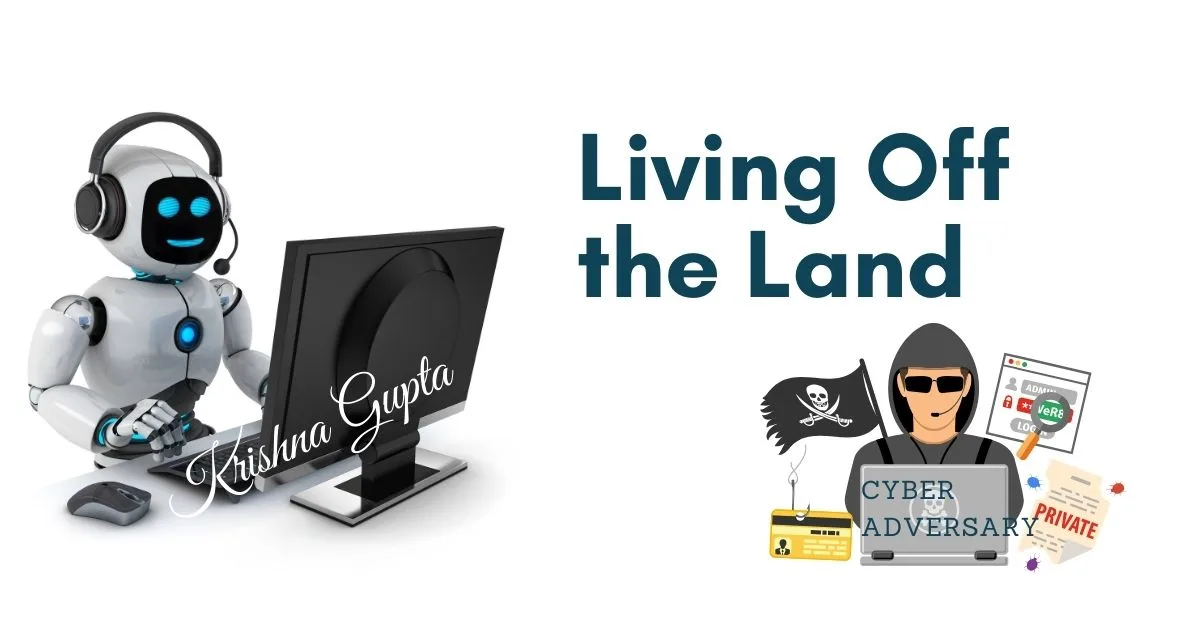Living Off the Land: The Hidden Threat Lurking in Your Systems
In today’s dynamic business landscape, cybersecurity threats constantly evolve, demanding constant vigilance from CEOs like yourself. While you may be familiar with the dangers of malware and phishing attacks, another insidious threat silently festering within your systems: Living off the Land (LotL) tactics.
What is LotL?
Imagine a thief breaking into your office, not by using sophisticated tools, but by simply leveraging the screwdrivers and crowbars readily available on your shelves. That’s the essence of LotL. Attackers exploit legitimate tools and functionalities already on your systems to achieve their malicious goals, making them particularly difficult to detect.
Living off the Land (LotL) tactics refer to a cyberattack technique where attackers leverage legitimate tools and functionalities already present on a targeted system to carry out malicious activities.
In the same way, LOTL attackers “break into” a computer system and use its existing tools to achieve their goals, which can include:
- Data exfiltration: Stealing sensitive data from the system.
- Lateral movement: Moving across the network to other systems.
- Privilege escalation: Gaining higher levels of access within the system.
- Persistence: Maintaining access to the system for long-term malicious activity.
Why are LotL tactics so effective?
LotL attacks are challenging to detect for several reasons:
- They don’t rely on malicious software: Traditional security solutions often focus on detecting malware signatures, but LotL attacks don’t use any new or suspicious files.
- They blend in with legitimate activity: The tools used in LotL attacks are also used for legitimate purposes by system administrators and users. This makes it difficult to distinguish between malicious and benign activity.
- They can be customised to the target environment: Attackers can tailor their LotL tactics to the specific tools and functionalities available on the targeted system.
Examples of standard LotL tools:
- PowerShell: A scripting language pre-installed on Windows systems that can be used for a variety of tasks, including file execution, registry manipulation, and network communication.
- Command Prompt: A command-line interpreter available on most operating systems that can be used to execute various commands.
- Regsvr32.exe: A legitimate Windows utility that can load and register DLL files. Attackers can exploit this tool to execute malicious code.
- WMI (Windows Management Instrumentation): A framework for managing and querying Windows systems. Attackers can use WMI to gain access to system information and perform various tasks.
How to defend against LotL attacks:
- Implement application safe listing: This security technique only allows authorised applications to run on the system, making it more difficult for attackers to use legitimate tools for malicious purposes.
- Monitor system activity for suspicious behaviour: Security teams can monitor user activity, process execution, and network traffic for anomalies that might indicate a LotL attack.
- Educate users about cybersecurity: Users should be aware of the risks of LotL attacks and how to avoid falling victim to them. This includes being cautious about opening attachments or clicking on links from unknown messages and not using unauthorised software or tools on work systems.
Organisations can better protect themselves from these sophisticated attacks by understanding LotL tactics and implementing appropriate security measures.
Why should you care?
The repercussions of a LotL attack can be devastating for your business:
- Data breaches: Sensitive information like customer data, financial records, and intellectual property can be stolen.
- Disrupted operations: Critical systems can be compromised, leading to downtime, productivity loss, and reputational damage.
- Financial losses: Regulatory fines, remediation costs, and lost business opportunities can significantly impact your bottom line.
The ROI of proactive defence:
Investing in robust cybersecurity measures to combat LotL is not just an expense. It’s a strategic investment with a significant return on investment (ROI). Here’s how:
- Mitigate financial risks: Proactive defences can prevent costly data breaches, regulatory fines, and downtime.
- Protect your brand reputation: Safeguarding sensitive data builds trust and strengthens your brand image.
- Ensure business continuity: Minimising disruptions keeps your operations running smoothly and efficiently.

Taking action:
Here are some critical steps to fortify your defences against LotL attacks:
- Implement application allowlisting: Restrict unauthorised applications from running on your systems, limiting the attacker’s toolkit.
- Enhance user education: Train your employees to identify and avoid suspicious activity, becoming the first line of defence.
- Deploy advanced security solutions: Invest in tools to monitor system activity for anomalies and suspicious behaviour.
By understanding the threat of LotL and taking proactive security measures, you can safeguard your valuable data, ensure business continuity, and drive long-term success for your organisation. Remember, Information Security is not an IT issue. It’s a boardroom imperative. Take action today to protect your most valuable assets and ensure a secure future for your business.